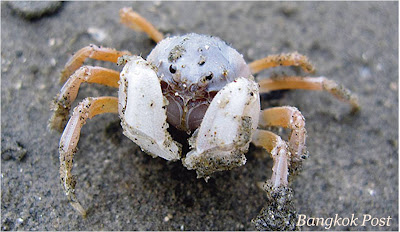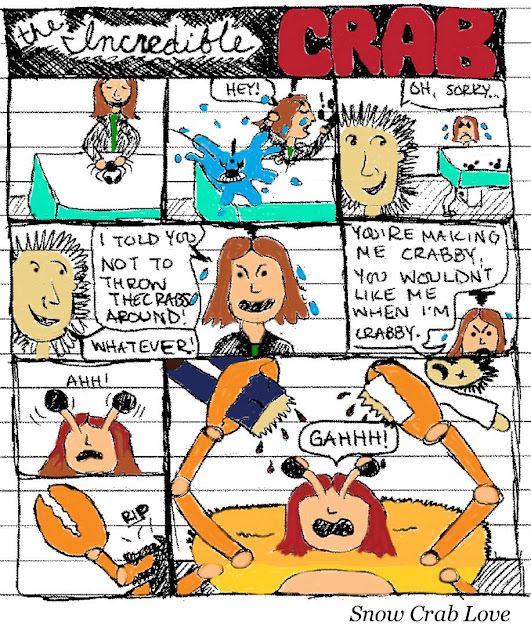friendly ghost fishing?
Recently Virginia budgeted $3.5 million for a Marine Debris Removal Program in an effort to clean their waters of lost crab pots. These “ghost” pots, so called because they continue to trap and kill animals without their attending fishermen, were targeted as part of a larger ($15 million) project to restore the blue crab (Callinectes sapidus) population. What resulted was a 70-[water]man-effort pulling 24,859 crab pots from Chesapeake Bay and its tributaries over the past 3 years! In addition, 3,336 peeler and eel pots and 152 nets were removed.

Chesapeake Bay: red dots are buoyed crab pots,
peach dots are unbuoyed crab pots;
check out the interactive marine debris site viewer here!
All the pots were located using side-scan sonar tracking. Fishermen who had been shut out of the crab dredge fishery, which had been closed in 2008, were offered the pot retrieval work, making this program not only help the benthic population but also the human population of Virginia.
a pile of pots
In both my work on a lobster boat in Long Island Sound and commercial fishing vessels in the Bering Sea, ghost fishing pots were hard to avoid. Bering Sea fishermen regularly find crab pots, lost due to storms or lines being cut from propellers or ice flows. When a pot was found, it was brought on board, the netting was cut so nothing else could be caught, and then it would be dumped at set locations where other fishermen throughout the Bering know to avoid (pretty neat, actually).
Bering Sea crab pot stuck in our net
Ghost fishing can be a huge problem for both healthy and recovering stocks; VIMS scientists supervising the Chesapeake Bay program estimated that each derelict pot can capture about 50 crabs each year it’s lost! Just within the last year of the Marine Debris Removal Program, 9,970 ghost pots were snagged with more than 11,000 animals trapped inside. Imagine how many animals will be saved, for future stocks and future managed harvests, now that the Chesapeake is without more than 28,000 pots!
dead blue crabs in a derelict pot



























